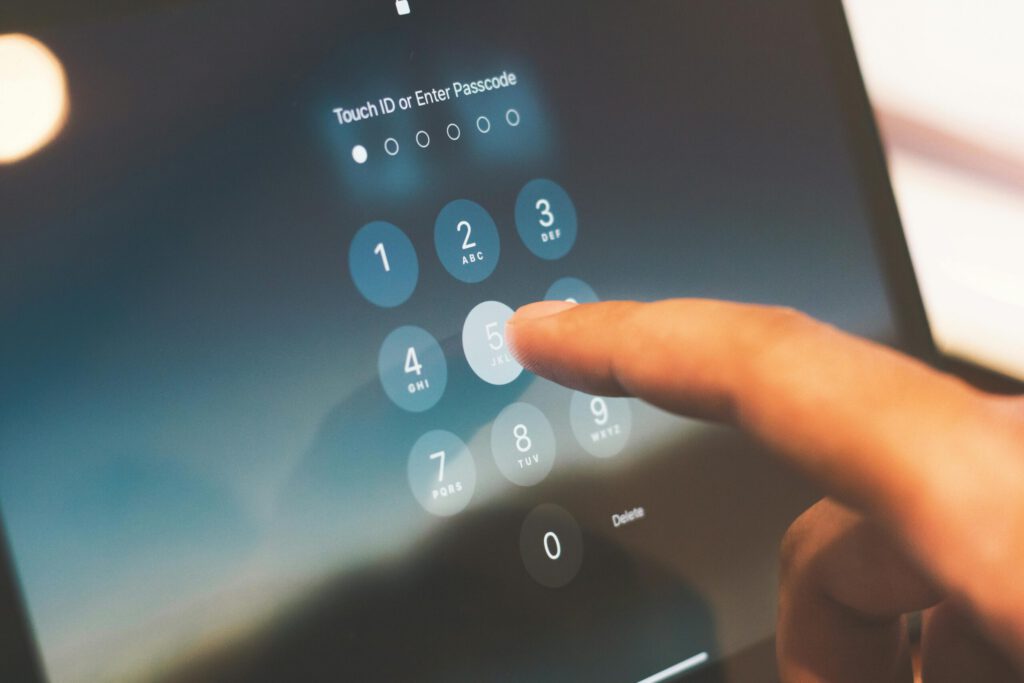Stay Safe Online: How Multi-Factor Authentication Protects You
You’ve done the hard work of creating strong passwords—maybe even a unique one for every site you use. But what happens if a company’s website is hacked and your password ends up in the wrong hands? Suddenly, your careful password habits aren’t enough.
That’s where multi-factor authentication (MFA) comes in. Think of it as adding a second lock to your front door. Your password is the first lock—the key you already have. The second lock is a special code that only you can get, usually on your phone. Even if someone steals your key (password), they still can’t get in without the second lock.
What Is Multi-Factor Authentication?
Multi-factor authentication means you need two or more different things to prove you are you:
- Something you know – usually your password.
- Something you have – like your phone, a special key, or another trusted device.
Here’s how it works when you sign into a website with MFA enabled:
- You enter your password like normal.
- The website asks for a special code.
- This code is sent to your phone or trusted device.
- You type the code into the website, and voilà—you’re in.
A thief would need both your password and your phone to break in. That’s why multi-factor authentication is so effective at keeping your accounts safe.
Why It Matters
You might be thinking: “Do I really need this?” The answer is yes. Every day, hackers target email accounts, banking apps, social media, and online stores. Without MFA, your personal photos, financial information, and important emails could be at risk.
Setting up multi-factor authentication is a small step that makes a huge difference in protecting your digital life.
Turning On MFA for Your Apple ID
Your Apple ID is central to everything on your iPhone, iPad, or Mac—apps, contacts, photos, and even payment information. Protecting it is critical.
Here’s how to turn on MFA for your Apple ID:
- On your Mac, go to System Settings (or System Preferences on older macOS versions).
- Click your name at the top of the sidebar.
- Click Password & Security.
- If it’s not already on, you’ll see a button to Turn On Two-Factor Authentication.
- Follow the on-screen steps.
Once it’s set up, your Apple ID will be much safer.
Quick Reference: Multi-Factor Authentication for Common Accounts
Table Description:
This table provides a quick reference for enabling multi-factor authentication on popular online accounts, including major Canadian banks. It explains why MFA is important for each account and provides direct links and step-by-step instructions to help you secure your accounts quickly and easily.
| Account / Service | Why MFA Matters | How to Turn It On |
|---|---|---|
| Apple ID | Protects apps, contacts, photos, payments, and personal data across all Apple devices. | On Mac: System Settings → Your Name → Password & Security → Turn On Two-Factor Authentication. Apple Support Link |
| Google / Gmail | Secures your email, Google Drive files, and connected apps. | Go to Google Account → Security → 2-Step Verification → Get Started. Google Support link |
| Keeps your social media account, friends list, and messages safe. | Settings → Security and Login → Two-Factor Authentication → Edit. Facebook Help link | |
| Royal Bank of Canada (RBC) | Protects your banking information and transactions. | RBC 2-Step Verification Guide |
| TD Canada Trust | Adds an extra layer of security to your online banking. | TD Two-Step Verification |
| Scotiabank | Safeguards your personal and financial information. | Scotiabank 2-Step Verification |
Staying Safe Without Stress
Multi-factor authentication is simple once you get used to it. A few tips to make it easier:
- Keep your trusted device (usually your phone) handy when signing in.
- Make a note of backup codes, just in case your phone is unavailable.
- Treat your phone like a key—don’t share it or leave it unlocked around others.
It only takes a few minutes to set up, but the peace of mind lasts forever.
Take Action Today
Multi-factor authentication is one of the easiest, most powerful ways to protect yourself online. Don’t wait until something happens—take a few minutes now to secure your accounts.
If you’d like step-by-step help setting up MFA on your Apple ID, email, banking accounts, or other services, I’m here to guide you. Contact me via the form on The Apple Pro website, and I’ll help make your online life safer and simpler.

